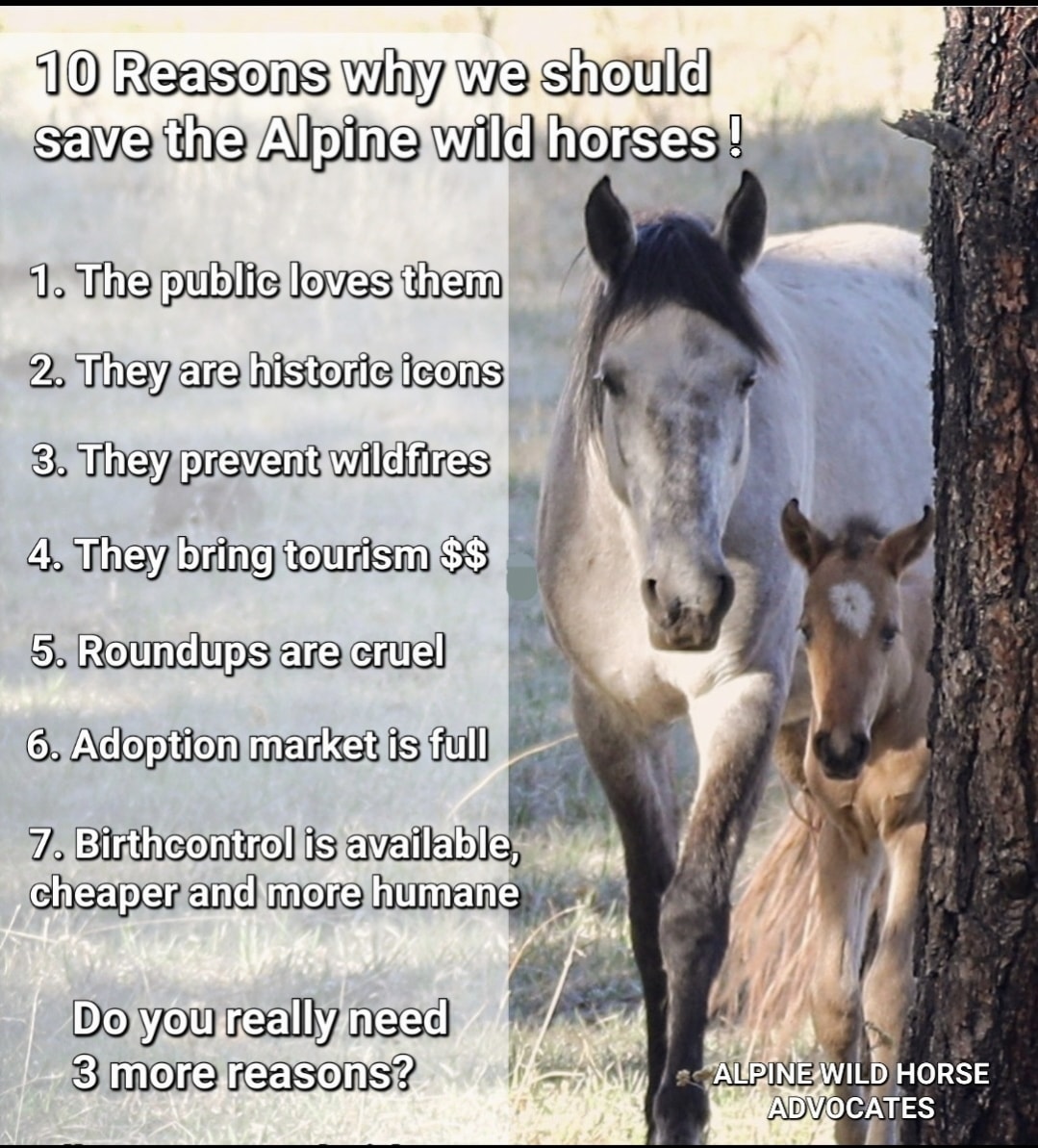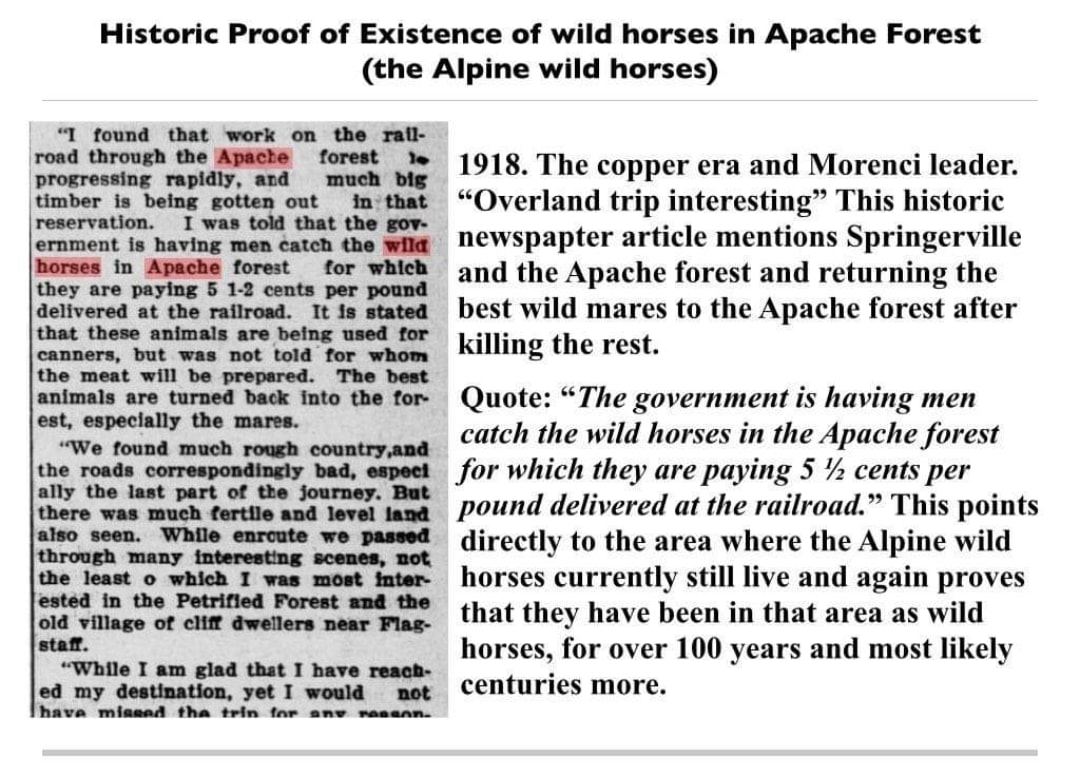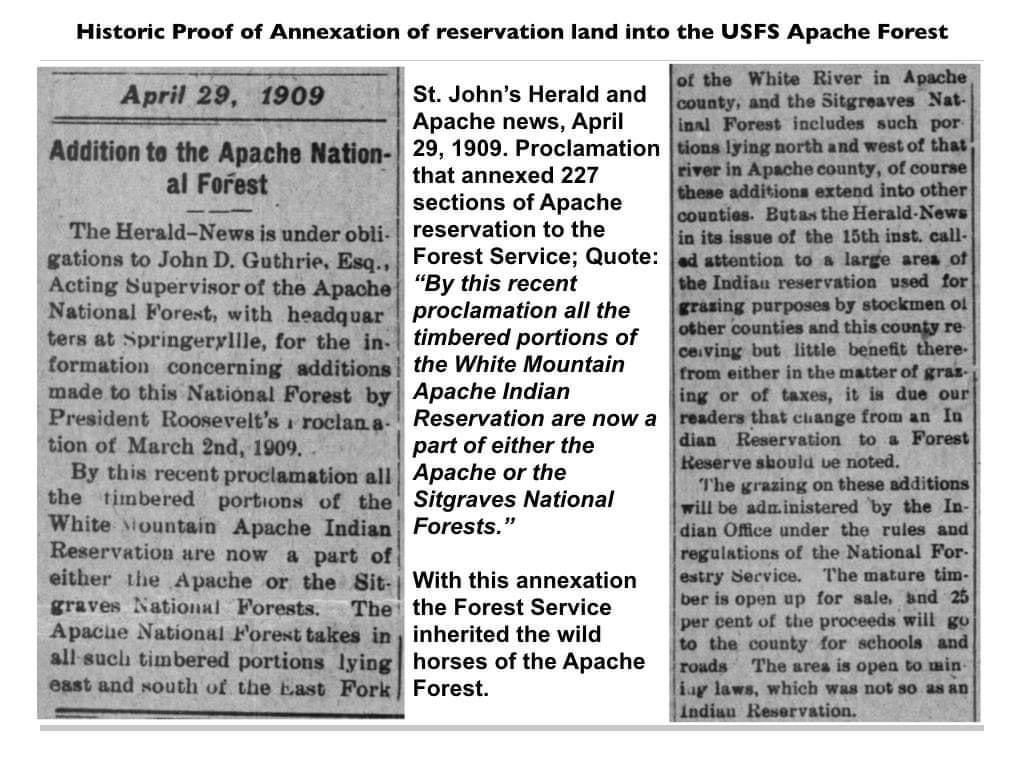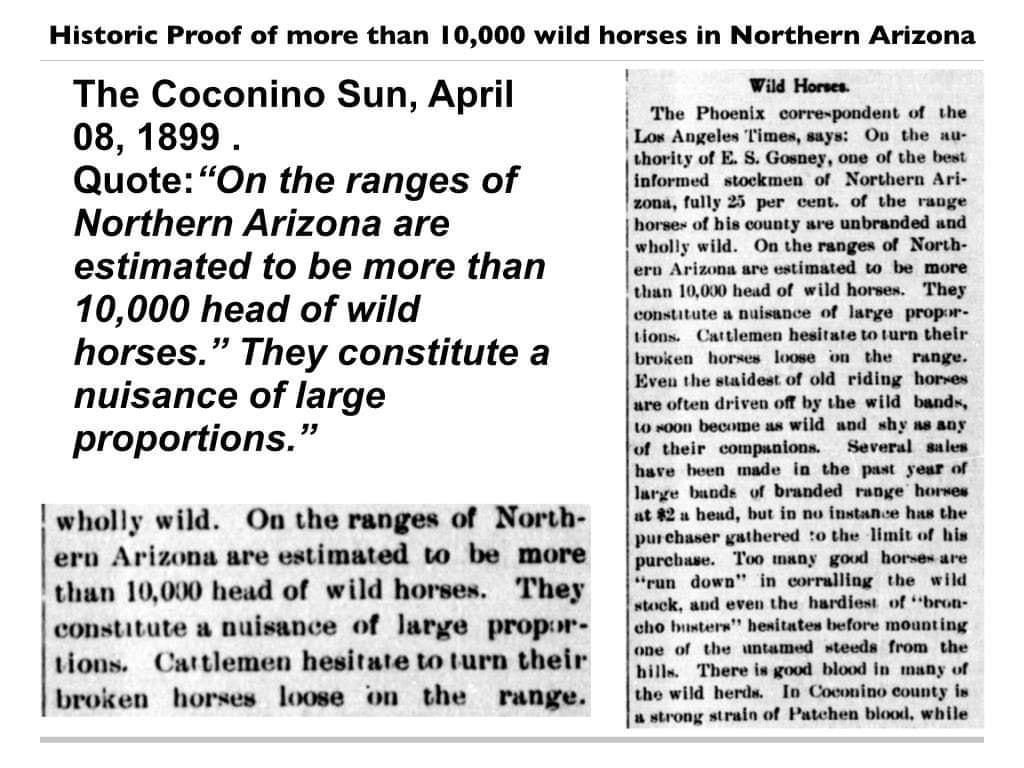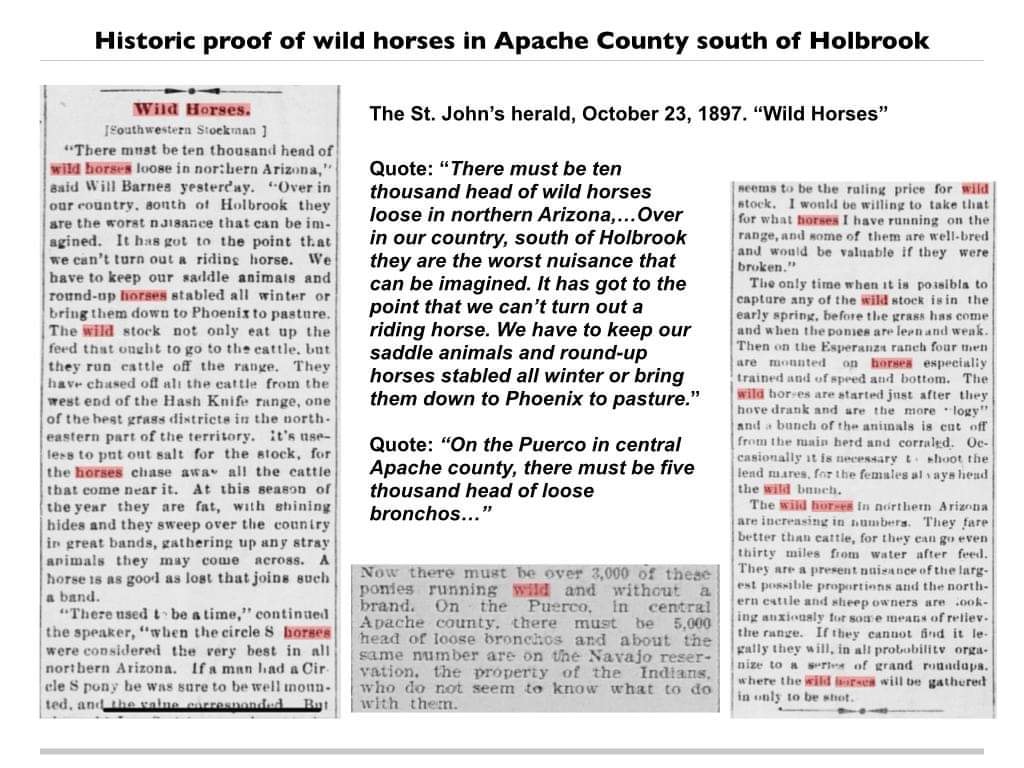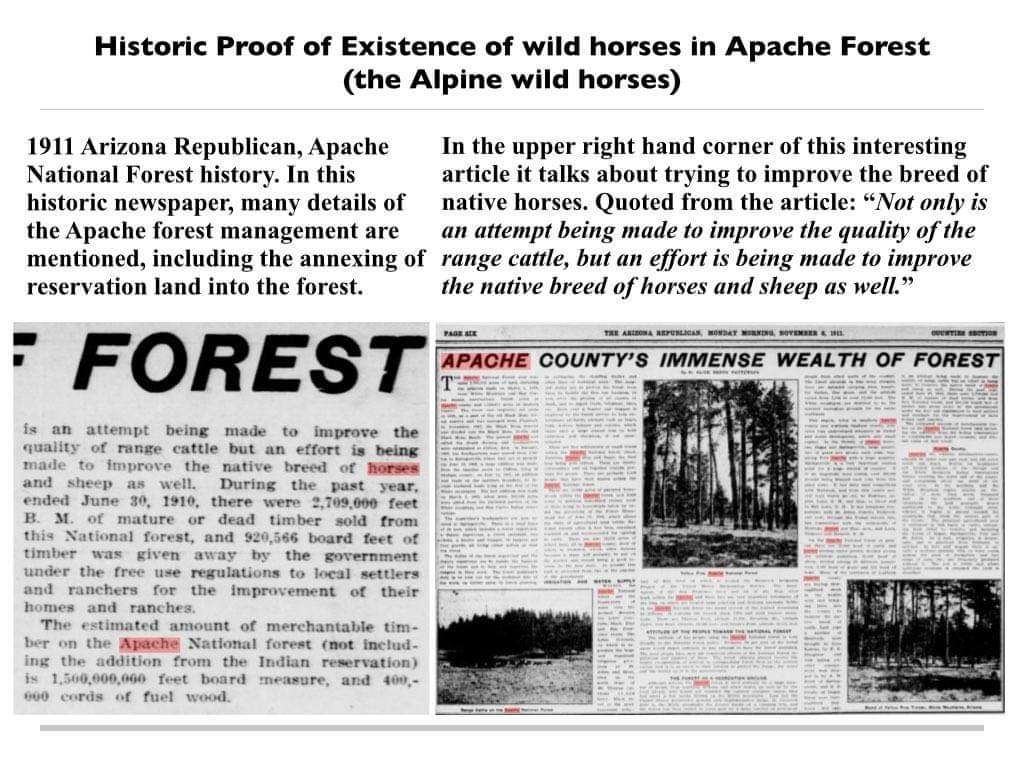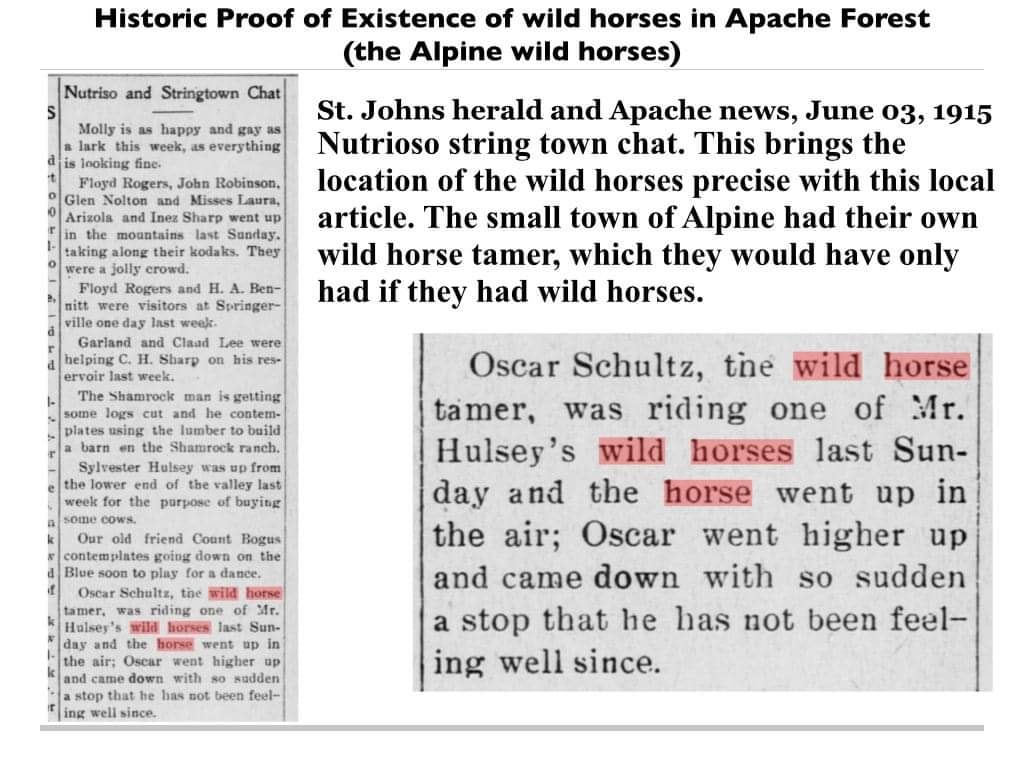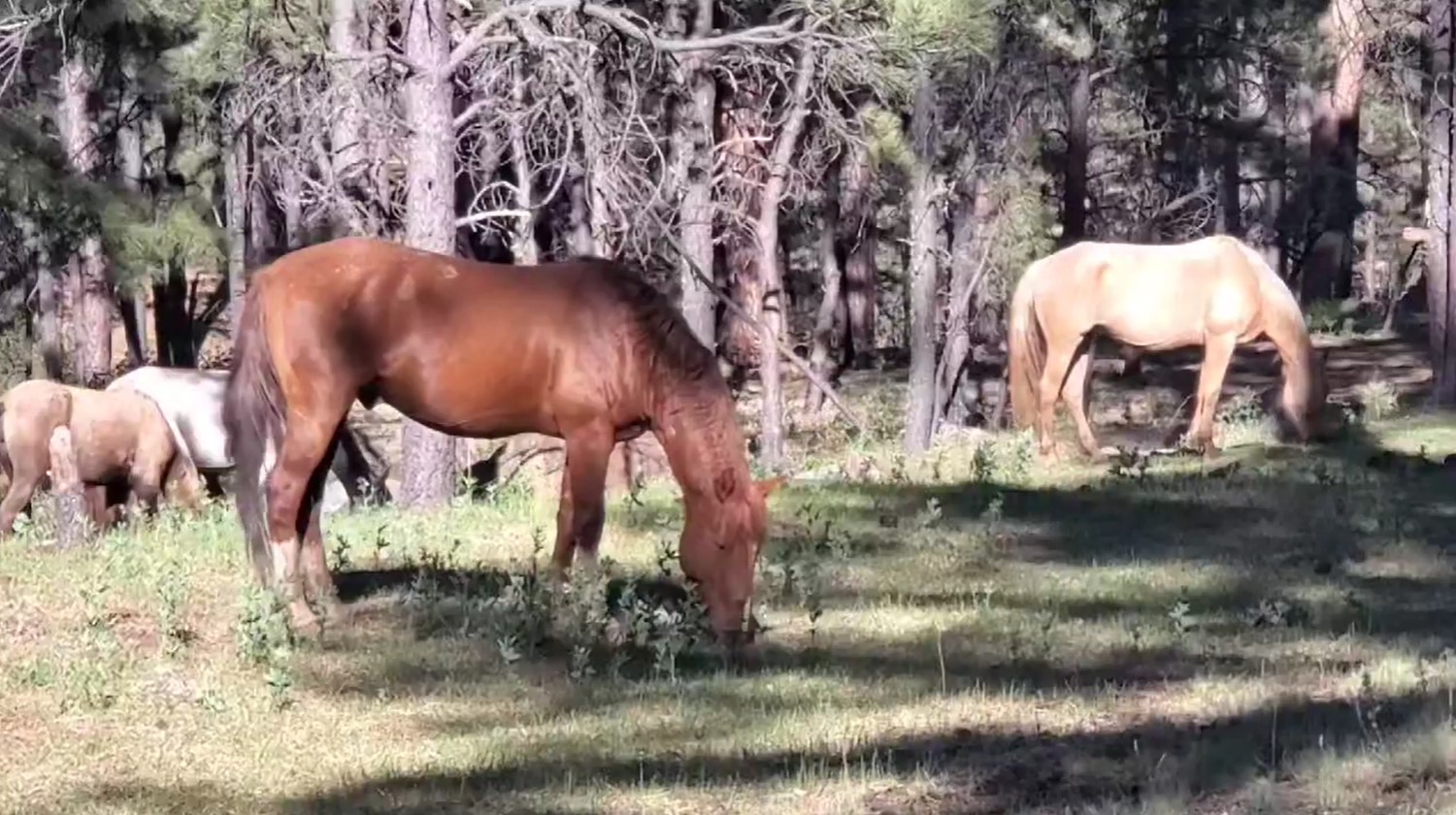
Apache Sitgreaves Forest Service starts trapping the Alpine herd this week, in spite of horse advocates push for humane management.
July 5th

Contact:
Simone Netherlands
Simone@respect4horses.com
For Immediate Release:
Apache Sitgreaves Forest Service starts trapping the Alpine herd this week, in spite of horse advocates push for humane management.
Apache Sitgreaves National Forest, Alpine, Arizona (July 6th, 2022)
In a fight reminiscent of the fight for the Salt River wild horses, the Salt River Wild Horse Management Group (SRWHMG) claims that the Forest Service is violating federal law in trying to trap and sell the historic Alpine wild horses in the Apache Sitgreaves National Forest. The Forest Service says that the horses are “stray livestock” and that they will close the forest today and start trapping the first 20 horses.
The National Environmental Policy Act (NEPA) requires the Forest Service to perform an Environmental Impact statement as well as have a public comment period, before taking any actions such as removing wild horses from National Forests, explains Simone Netherlands, president of the Salt River Wild Horse Management Group. According to the group, the Forest Service is trying to circumvent this federal law through a categorical exclusion which SRWHMG attorneys say is illegal.
Recently hundreds of cattle have been released in the same area these historic horses live in. The Forest Service in their press release confirmed that they want to make more forage available for cattle, which begs the question if their claims of concern for the environment are sincere. (Cattle do much more damage to the environment than horses do)
As written in attached demand letter from attorneys for SRWHMG, the categorical exclusion may only apply when someone has abandoned a horse in the forest, which is clearly not the case with the Alpine wild horses.
The assertion by the Forest Service that they are “stray livestock” seems unlikely, seeing as how many historic newspaper articles mention the horses in the Apache Forest as early as 1835. “No one has abandoned any of these 400 horses, except explorer Francisco Vasquez de Coronado himself when he made this very trail in 1540, which these horses still live in and around”, states Simone. (historic article links are attached)
“Humane management of wild horses is available, it is more cost effective and more humane, as we have proved by managing the Salt River wild horses”, says Netherlands, and we have offered it to the Forest Service for the Alpine wild horses as well. Why the Forest Service has refused this offer is unclear. It makes no sense at all to let them have 100 foals a year, only to displace them from their homes, separate their families and sell them at auction.
These horses will go from their idyllic cool pines environment at 9000 ft, to Holbrook where it is 110 degrees! This change and the stress alone might kill this young foal in the picture, and many other newborns, who were all documented and named by members of the Alpine Wild Horse Advocates.
Our remaining Arizona wild horses are an important part of our pioneering wild west history and the public of Arizona loves them and wants to see them managed humanely. In addition they are an important tourism resource for the small town of Alpine in northeastern Arizona, why rob this small community of this economic boon.
Attached: Historic articles as evidence that the Alpine wild horses have been living in the Apache Forest for centuries.
For more information you may join Alpine Wild Horse Advocates on Facebook. Please feel free to share but credit SRWHMG for this proprietary research and information, thank you. SRWHMG.
